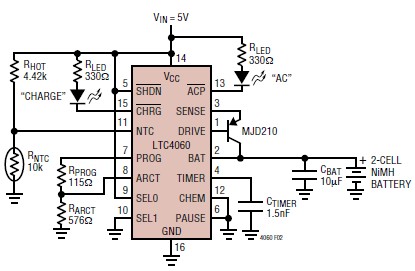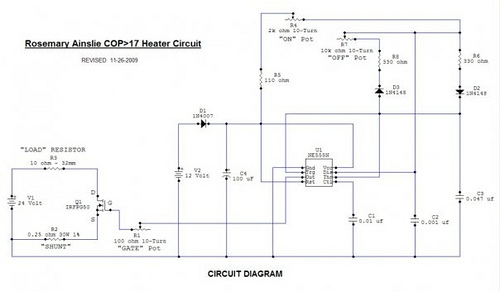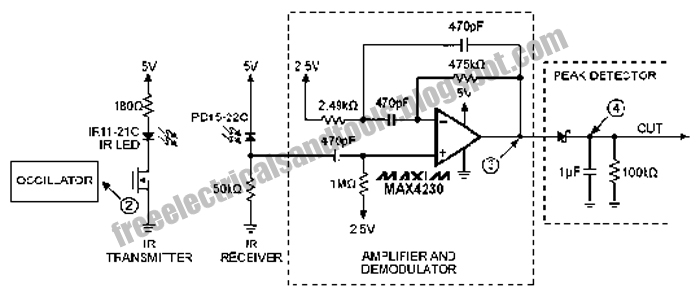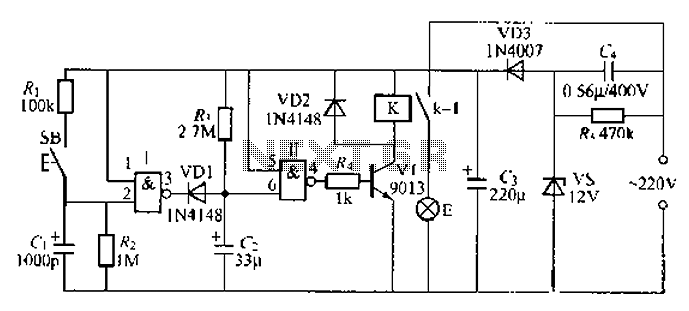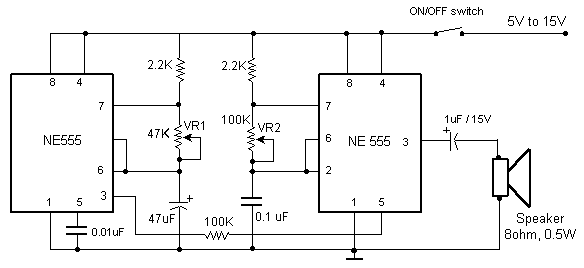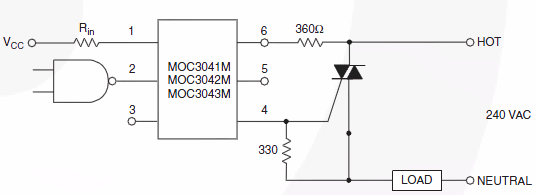
random motor circuit
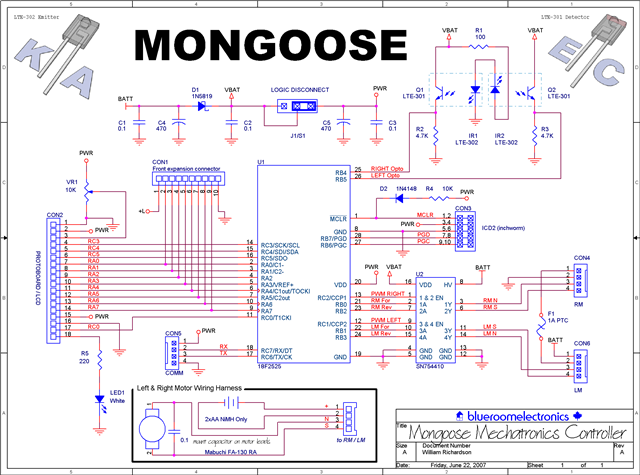
Is there a circuit that can be used to make a DC motor move randomly backward and forward, stop for a period, and then start again? Any assistance and ideas would be greatly appreciated. Research how to wire up PICs. In the simplest terms, it involves connecting power through a simple voltage regulator IC, adding some bypass capacitors between V+ and ground to stabilize the voltage, and connecting the oscillator. Many microcontrollers have an internal oscillator, so if that is sufficient, an external oscillator is not necessary. Search for simple PIC circuits that perform various functions and compare their similarities. This is essential for wiring in the most basic form. Some topics are too extensive and require too many words to explain step-by-step in a forum. After conducting some reading, return with specific questions that will be easier to address and understand. Providing a lengthy explanation may not be helpful if comprehension is lacking. The request's wording may imply a lack of effort. To simplify the schematic, it is possible to remove components to the left and top of the PIC, retaining only those to its right and the motor section below. The schematic utilizes an H-bridge IC instead of discrete components (the SN75410). A regulator should be added to the circuit for the PIC. A good starting point is learning to use the LM7805, which is straightforward to understand with its datasheet. The purpose of the optocouplers in the top-right of the schematic is unclear and can be disregarded. The H-bridge uses the "raw" voltage (or a different voltage supply) from the PIC, which operates on a voltage regulated for clarity.
To create a circuit that enables a DC motor to move in a random pattern, alternate between moving forward and backward, and pause at intervals, a microcontroller such as a PIC (Peripheral Interface Controller) can be employed. The circuit design will incorporate an H-bridge configuration, which allows for bidirectional control of the motor. The H-bridge can be implemented using an integrated circuit like the SN75410, which simplifies the design by consolidating multiple discrete components into a single package.
Powering the circuit requires a voltage regulator, such as the LM7805, to ensure that the microcontroller and other components receive a stable voltage supply. The LM7805 can convert a higher input voltage down to a regulated 5V output, suitable for most microcontrollers. Bypass capacitors should be placed between the V+ and ground to filter out noise and stabilize the voltage levels, enhancing the reliability of the circuit.
The microcontroller can be programmed to control the motor's direction and timing using digital output pins. The internal oscillator of the microcontroller can be utilized for timing functions, or an external oscillator can be connected if higher precision is required. The program logic can include random delays and direction changes, allowing for the desired movement pattern.
In summary, the circuit will consist of a microcontroller, an H-bridge IC, a voltage regulator, and necessary bypass capacitors. Proper wiring and programming will enable the DC motor to operate as specified, moving randomly and pausing at intervals.Does anyone know what circuit i can use to make a dc motor randomly move backward and forward, stop for a period of time and then start again Any help and ideas will be much apreciated. Google and read about how to wire up PICs. In the simplest sense, it involves wiring up power through a simple voltage regulator IC, some bypass capacitors betwee
n V+ and ground to stabilize the voltage, and wiring up the oscillator. A lot of microcontrollers now also have an internal oscillator so if that is good enough you don`t even need to wire it up an oscillator (just power). How much easier can it get Google around for SIMPLE PIC circuits that do different things and compare the similarities between them.
THat`s what is needed to wire up in the most basic form. THere are some things that are too vast, take too many words and unwarranted to take you step-by-step through them on a forum. Come back after you`ve done some of the reading and ask specific questions that will be easier for us to answer, and for you to understand the answers to.
If I waste my time spitting out a huge chunk of text, you still probably wouldn`t understand it because that`s just the way it is. We aren`t exactly here to hold your hand (and your last post irked me quite a bit in the "exact" nature of the request and wording because it seems to indicate a complete lack of effort on your part).
blueroom, I think it`s just funny the way your little avatar seems to look at the schematic for the mongoose. (Like are you sure you want to do this Or I really don`t think he knows what he`s getting himself into.
) TO simplify BLueroom`s schematic, you can probably chop off everything to the left and top of the PIC in the middle, leaving only the stuff to it`s right, and the motor part to the bottom. In his schematic, he used an H-bridge IC rather than one of discrete components (The SN75410). No regulator is in the circuit for the PIC so one should be added. A starting place to look at is how to use the LM7805. It`s very simple, you should have no problem understanding how it`s used if you take a glance at the datasheet (or the datasheet of any other linear regulator).
I have no idea what those optocouplers are for on the top-right of the schematic so you can ignore those too. Notice the H-bridge has uses the "raw" voltage (or a different voltage supply) from the PIC. The PIC uses a voltage that has been cleaned up by a regulator (not shown) 🔗 External reference
To create a circuit that enables a DC motor to move in a random pattern, alternate between moving forward and backward, and pause at intervals, a microcontroller such as a PIC (Peripheral Interface Controller) can be employed. The circuit design will incorporate an H-bridge configuration, which allows for bidirectional control of the motor. The H-bridge can be implemented using an integrated circuit like the SN75410, which simplifies the design by consolidating multiple discrete components into a single package.
Powering the circuit requires a voltage regulator, such as the LM7805, to ensure that the microcontroller and other components receive a stable voltage supply. The LM7805 can convert a higher input voltage down to a regulated 5V output, suitable for most microcontrollers. Bypass capacitors should be placed between the V+ and ground to filter out noise and stabilize the voltage levels, enhancing the reliability of the circuit.
The microcontroller can be programmed to control the motor's direction and timing using digital output pins. The internal oscillator of the microcontroller can be utilized for timing functions, or an external oscillator can be connected if higher precision is required. The program logic can include random delays and direction changes, allowing for the desired movement pattern.
In summary, the circuit will consist of a microcontroller, an H-bridge IC, a voltage regulator, and necessary bypass capacitors. Proper wiring and programming will enable the DC motor to operate as specified, moving randomly and pausing at intervals.Does anyone know what circuit i can use to make a dc motor randomly move backward and forward, stop for a period of time and then start again Any help and ideas will be much apreciated. Google and read about how to wire up PICs. In the simplest sense, it involves wiring up power through a simple voltage regulator IC, some bypass capacitors betwee
n V+ and ground to stabilize the voltage, and wiring up the oscillator. A lot of microcontrollers now also have an internal oscillator so if that is good enough you don`t even need to wire it up an oscillator (just power). How much easier can it get Google around for SIMPLE PIC circuits that do different things and compare the similarities between them.
THat`s what is needed to wire up in the most basic form. THere are some things that are too vast, take too many words and unwarranted to take you step-by-step through them on a forum. Come back after you`ve done some of the reading and ask specific questions that will be easier for us to answer, and for you to understand the answers to.
If I waste my time spitting out a huge chunk of text, you still probably wouldn`t understand it because that`s just the way it is. We aren`t exactly here to hold your hand (and your last post irked me quite a bit in the "exact" nature of the request and wording because it seems to indicate a complete lack of effort on your part).
blueroom, I think it`s just funny the way your little avatar seems to look at the schematic for the mongoose. (Like are you sure you want to do this Or I really don`t think he knows what he`s getting himself into.
) TO simplify BLueroom`s schematic, you can probably chop off everything to the left and top of the PIC in the middle, leaving only the stuff to it`s right, and the motor part to the bottom. In his schematic, he used an H-bridge IC rather than one of discrete components (The SN75410). No regulator is in the circuit for the PIC so one should be added. A starting place to look at is how to use the LM7805. It`s very simple, you should have no problem understanding how it`s used if you take a glance at the datasheet (or the datasheet of any other linear regulator).
I have no idea what those optocouplers are for on the top-right of the schematic so you can ignore those too. Notice the H-bridge has uses the "raw" voltage (or a different voltage supply) from the PIC. The PIC uses a voltage that has been cleaned up by a regulator (not shown) 🔗 External reference
